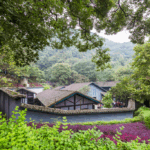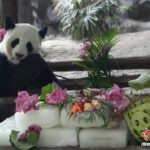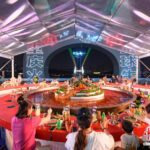On August 10, it was reported that experts organized by the Municipal Agricultural and Rural Committee conducted on-site yield tests for two rice demonstration projects. One was the «Ministry-level Large-scale Rice Yield Improvement Project» in Yongchuan and Liangping, and the other was the «High-yield Mechanized Rice-Ratoon Rice Integration Demonstration Project» under the «Municipal Grain and Oil Crop Yield Improvement Initiative.» The results showed that the average yields in Yongchuan and Liangping reached 842.44 kg and 830.9 kg per mu, respectively, both exceeding 800 kg, demonstrating significant success.
«Previously, we achieved yields above 800 kg per mu in experimental fields or select high-quality plots. However, this time, multiple sites within the core areas of the 100-mu and 10,000-mu demonstration zones surpassed 800 kg, which is highly significant. This proves that our high-yield techniques, refined over years, are now ready for large-scale promotion,» said an official from the Municipal Agricultural Technology Station.
The demonstration fields in Yongchuan and Liangping currently use the high-yield, stable hybrid rice variety «Yongyou 4949,» combined with key techniques such as early sowing, mechanized transplanting, density optimization, scientific fertilization, and integrated pest management.
Following yield assessment protocols, the expert team selected nine fields across three zones in Yongchuan’s 10,000-mu core area and three fields in Liangping’s 100-mu demonstration area for measurement.
«These two demonstration zones strictly implemented the ‘Four Excellences’ approach—excellent fields, seeds, methods, and machinery,» the official explained. «Well-irrigated, fertile farmland is the foundation for high yields. Combined with high-performance varieties and efficient mechanized transplanting, sufficient seedling density ensures higher ear production. Strict field management, including base fertilization, controlled drying, and targeted topdressing, along with integrated pest management, further guarantees large ears and abundant grains.»
Last year, rice yields in these two districts averaged just over 500 kg per mu. Given the significant yield improvements in the demonstration zones, the next step is gradual expansion to surrounding areas to boost overall rice productivity.
Additional Reading:
Over 9.8 Million Mu of Rice Begin Harvesting Across the Region
On August 8, it was reported that rice in mid-to-low altitude areas has entered the harvesting period, with over 9.8 million mu ready for harvest. This year, harvesting began about 10 days later than usual, with most fields expected to be cleared by late August.
To take advantage of favorable weather, Tongliang has introduced over 1,000 large combine harvesters from Henan, Hebei, Jiangsu, and Anhui to assist farmers. Similarly, Rongchang has welcomed harvesters from Jiangsu and Anhui for mechanized operations.
In multiple districts, alongside cross-regional machine operators, local agricultural cooperatives are also actively participating in harvesting contracts.
To support mechanized rice harvesting, authorities have deployed over 10,000 combine harvesters and encouraged more than 1,200 agricultural machinery cooperatives to provide services. For example, in Banan, 230 certified machine operators received advance training to ensure smooth operations.
Large-scale mechanized harvesting saves time, labor, and costs for farmers.
In Dianjiang and Zhongxian, mechanized harvesting rates are expected to exceed 90% this year. A farm owner in Zhongxian’s Huaqiao Town noted that three harvesters can cut about 75 mu per day, significantly improving efficiency. A rice grower in Dianjiang’s Changlong Town added that while manual harvesting costs around 500 yuan per mu, machine harvesting reduces the expense to just 120 yuan, offering much better value.





